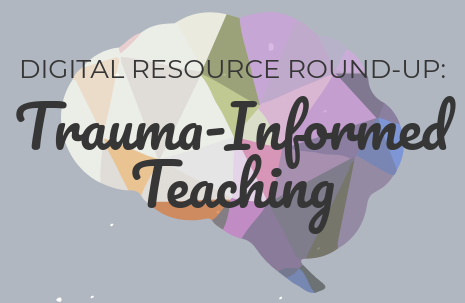January 24, 2018

Mind/Shift from KQED News has spent a lot of time covering issues related to childhood trauma, students, and schools. From helpful brief articles to case studies of schools making an effort to address childhood traumatic stress, their articles are a helpful starting place for educators looking to make changes that will benefit children.
According to the National Child Traumatic Stress Network (NCTSN), approximately 25% of American children experience a traumatic event by the time they are sixteen years of age. In order to help teachers and administrators support students exposed to traumatic stress, NCTSN offers a Child Trauma Toolkit for Educators. The toolkit includes facts about trauma and divides pertinent information into sections for preschool, elementary, middle and high school. There is also a section focused on educator self-care. The toolkit is available in both English and Spanish.
The NCTSN also offers a bundle of resources called Psychological First Aid for Schools. This manual includes useful information for educators, as well as resources that can be shared with parents and/or caregivers. There is also a helpful wallet card that includes the eight core actions to take to assist in psychological first aid.
Need a quick intro video to help your colleagues understand the importance of a trauma-informed teaching? This one minute video quickly reviews how trauma can impact the developing brain. Just remember what Kennedy Krieger Institute’s Dr. Kaufman said in her interview, “We are learning more and more about resilience and recovery and neuroplasticity, genomic plasticity, and we have every reason to be optimistic. You want to bring that optimism and that hope to your interactions with children.”
Sesame Street is helping kids deal with the “big feelings” related to experiences of trauma. A new initiative called Sesame Street in Communities is focusing resources on helping children deal with traumatic stress. You can access resources for “providers” or “parents/caregivers.”
For those of us teaching older children, it is important to understand the connections between adolescent responses to trauma and substance abuse. The NCTSN offers a toolkit for providers to help you understand the link between use of drugs and alcohol and traumatic stress. While the toolkit is aimed at mental health providers, it has valuable information for teachers at well.
It is an unfortunate reality that so many children and adolescents come to school impacted by trauma and traumatic stress. Hopefully these resources and the other Linking Research to Classroom Blog posts can assist you in starting conversations at your school surrounding pro-active approaches to meeting the needs of kids affected by trauma. Remember to practice compassion for your students as well as self-care.















